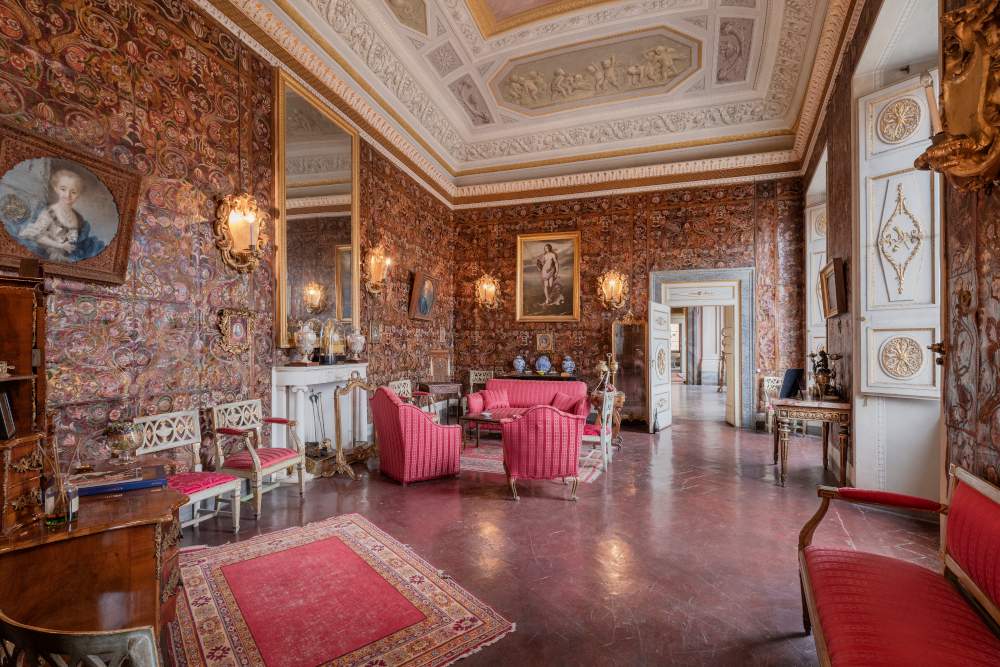Siena is enriched by a new museum reality: in fact, from Sunday, May 8, the Palazzo Chigi Zondadari House Museum opens to the public for the first time and permanently, thanks to the will of Flavio Misciattelli, president of the Palazzo Chigi Zondadari Foundation, who wanted to return the structure and the works preserved here to the community.
“Returning Palazzo Chigi Zondadari and the works contained here to the community is a source of great satisfaction for us, given also the family’s commitment to preserving the masterpieces that trace the historical and artistic events of Siena from the 14th century to the present,” said Misciattelli. “The openness to the contemporary and to young artists,” he added, “inaugurates a new season of commissions, as it had been for the Chigi Zondadari, with a view to establishing a living and lasting relationship between the present and the past, in which reciprocal references and suggestions weave the fabric of a new way of experiencing and knowing art.”
Commissioned by Cardinal Antonfelice Zondadari (1655 - 1737) and his brother Bonaventura (1652 - 1719), the first Marchese Chigi Zondadari and progenitor of the entire lineage, the Palazzo, the family’s Sienese residence since 1724, was the last to be built in Piazza del Campo, near the so-called Chiasso Largo.
In its present appearance, the building displays the typical Baroque-Neoclassical architecture of Roman import of the 18th century designed by Antonio Valeri (1648 - 1736), the last pupil of Gian Lorenzo Bernini, who was called in to modernize and enlarge pre-existing medieval buildings that had become the property of the Chigi family in the late 17th century.
It is a linear architecture, with five orders of windows, an internal courtyard and an agile grand staircase. Of the interiors, the main floor is the most interesting with the flight of halls and galleries that redesign the rectangular structure of the palace. The frescoed ceilings, the collection of important works of art, and the wall decoration of three rooms with “corami” of Venetian manufacture from the 1780s, which are particularly precious and resistant to wear and tear, give back a faithful glimpse of the wealth and quality of the commissions sought by the Chigi Zondadari family to work for the prestige of the household.
Among the renowned artists who worked on the palace were Placido Costanzi, a pupil of Francesco Trevisani, one of the most important artists in the wake of Carlo Maratta, and Benedetto Luti. Cardinal Antonfelice Zondadari entrusted the artist with the execution of some frescoes with episodes from the life of Pope Alexander VII and Cardinal Zondadari. Another painter who worked on the piano nobile was Marco Benefial, a pupil of Carracci’s Bonaventura Lamberti and author of other paintings. In the 19th century it was Francesco Nenci who completed the decoration of the rooms.
Testifying to the Chigi Zondadari family’s attention and interest in the arts and beauty is a rich collection of works of art, archaeological finds, paintings and sculptures, including Gian Lorenzo Bernini’s bust of Alexander VII.
On the occasion of the opening of the House Museum, Cortemporanea, the project that will transform the courtyard of the historic building into an exhibition space dedicated to site-specific works by Italian and international artists invited by Flavio Misciattelli to freely interpret the space, will be inaugurated.
The first artist involved is Pietro Ruffo who has conceived NEVER TOO YOUNG TO MAKE A DIFFERENCE, a title that refers back to one of the most representative slogans of Fridays For Future dedicated to the younger generations and their commitment to change social and environmental policies by world governments. It is an installation consisting of a large hand-painted ceramic amphora, more than two meters high, and several video projections full of characters interacting with the symbols of the contrade. The exhibition continues up the stairs to enter the Casa Museo, where globes and other smaller vessels are displayed.
Each year the Palazzo Chigi Zondadari House Museum and Cortemporanea will be open to the public from May through October (this year until Oct. 29).
In November-December and January-February, on the other hand, Il pollaio, a small space with a street-facing window at the entrance to the Palazzo on Vicolo dei Pollaioli, will be on view for two young Tuscan artists.
Hours and reservations:
- May 8 to June 19, 2022: Monday to Sunday, 10 a.m. to 1 p.m., by appointment only by booking a guided tour at fondazione@palazzochigizondadari.com. Groups maximum 15 people. Special afternoon or private openings can be arranged upon request;
- June 20 to October 29, 2022: Tuesday to Saturday, 10 a.m. to 1 p.m., by appointment only by booking a guided tour at fondazione@palazzochigizondadari.com. Groups maximum 15 people. Special afternoon or private openings can be arranged upon request.
 |
| Palazzo Chigi Zondadari House Museum opens in Siena, a new museum reality |
Warning: the translation into English of the original Italian article was created using automatic tools. We undertake to review all articles, but we do not guarantee the total absence of inaccuracies in the translation due to the program. You can find the original by clicking on the ITA button. If you find any mistake,please contact us.